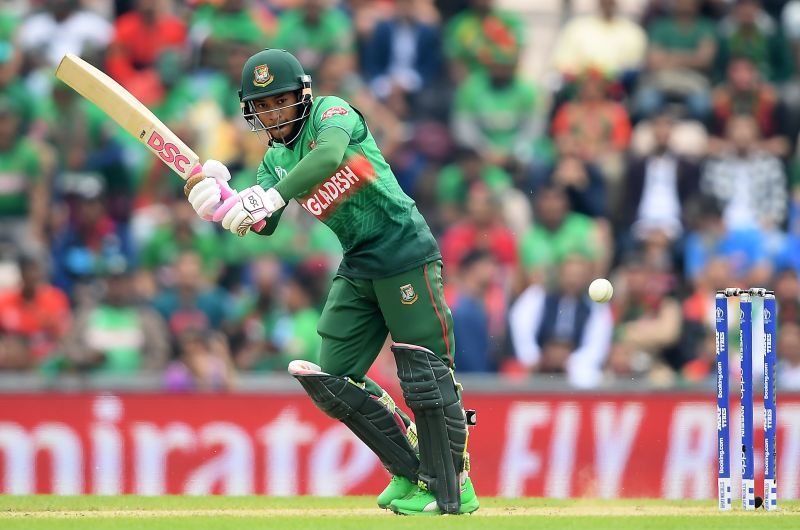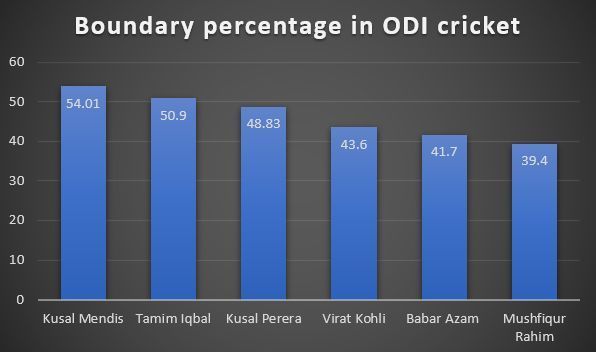
Mushfiqur Rahim proves run-accumulating artists still have a place in ODIs

On 23rd May 2021, Mushfiqur Rahim, for the umpteenth time, dug Bangladesh out of a treacherous hole and ensured that the Tigers posted a decent total. A couple of hours later, the hosts’ bowlers rose to the fore, meaning that Bangladesh scripted a convincing victory over Sri Lanka.
Expectedly, Mushfiqur Rahim was named the Player of the Match for his 84-run essay – something that didn’t just calm the Tigers’ nerves on a tricky track, but also methodically dismantled Sri Lanka at a time when the latter was in the ascendancy.
Though Mahmudullah and Tamim Iqbal also popped up with half-centuries, plenty were effusive in their praise of Mushfiqur Rahim, for the wicket-keeper had, over the course of his innings, devised a methodology optimally suited for the conditions.
The initial inclination, therefore, could be to term Mushfiqur Rahim’s act of redemption as one of his best knocks in ODI cricket. Not just because it led to a positive result, but also because he looked largely untroubled on a pitch that wasn’t conducive for stroke-making.
On further introspection, though, it was just another essay that highlighted Mushfiqur Rahim’s worth to the Tigers’ ODI set-up. More importantly, it cast light on the wicket-keeper’s approach – an art that has gotten lost in the hustle and bustle of T20 cricket.
Mushfiqur Rahim has been a consistent performer in ODIs
Throughout his international career, Mushfiqur Rahim has represented a batter who hasn’t been averse to taking his time. He has also been effective when looking for boundaries but has largely relied on rotation of strike as his primary modus operandi.
On Sunday against Sri Lanka, those traits came to the fore excellently. Despite scoring 84 off 87 balls, only 22 runs came in boundaries (4 fours and 1 six). In simpler terms, he scored 62 runs off the 82 deliveries (excluding the ball he was dismissed) on which no boundaries were scored.
For much of the aforementioned innings, Mushfiqur Rahim was content to place the ball in the gaps and run hard – something that upset the rhythm of the Sri Lankan spinners. And, when he was according opportunities to find the fence, he did so with unerring accuracy.
In fact, that is exactly how most of Mushfiqur Rahim’s batting career in ODIs has transpired. The wicket-keeper has rarely been bogged down and even though a strike rate of 78.92 might suggest otherwise, that is more a reflection of Bangladesh as a batting unit than his own flaws.
Incidentally, the tendency to push the ones and twos at the start of the innings and then timing the assault is something that has been mastered by Messrs. Babar Azam and Virat Kohli.

While the Pakistan skipper has a boundary percentage of 41.7 throughout his ODI career, Kohli boasts a corresponding tally of 43.6. However, with the Indian captain often batting through the innings and increasing his strike rate periodically, one can explain the elevated tally.
In contrast, three other batters – each of whom were on display at the Sher-e-Bangla Stadium on Sunday, possess skewed numbers. Unsurprisingly, it has had an adverse effect on their consistency.
Tamim Iqbal – the current Bangladesh ODI captain, has a boundary percentage of 50.9 in ODI cricket. More interestingly though, his career strike rate (78.32) is just a shade below that of Mushfiqur Rahim, despite there existing a general consensus that Tamim is a more belligerent option.
Kusal Mendis and Kusal Perera, meanwhile, also find themselves on the same end of the spectrum as Tamim. The latter, who has long been regarded as Sri Lanka’s most aggressive batter, has a boundary percentage of 48.83. Kusal Mendis, on the other hand, stands far ahead, with a tally of 54.01.

The explanation for Mendis, Perera and Tamim’s style being laden with more risk is pristinely clear. When these batters are not able to score boundaries, they invariably opt for a riskier alternative, rather than tending to singles and doubles, which would ordinarily pertain lesser risk.
Additionally, with these batters not accustomed to rotating strike as often, playing shots that could fetch them ones and twos also becomes tedious. In blunter terms, they get caught between a rock and a hard place and inevitably throw their wickets away – a fact embodied by Tamim Iqbal only converting 13 of his 64 fifty-plus scores into centuries.
Thus, there seems to be enough evidence to support the approach deployed by the likes of Babar Azam, Mushfiqur Rahim and Virat Kohli. Though it might be a stretch to mention the Bangladesh wicket-keeper in the same sentence as two contemporary greats, it emphasizes that Mushfiqur Rahim’s method is a lot more foolproof than some of the others.
Having said that, one isn’t suggesting that boundary-hitting is on the decline in ODI cricket. The likes of Jonny Bairstow (59.83), Rohit Sharma (52.05) and Shikhar Dhawan (57.18) still have boundary percentages in excess of 50%.
The problem, though, is that the aforementioned troika entails three of the cleanest hitters in white-ball cricket. Thus, emulating them might not be as easy, meaning that smarter risk-free cricket might be the norm, especially for batters not blessed with similar ability.

To that end, Mushfiqur Rahim could indeed be the beacon for his approach. Not just because he seems to have mastered that particular art, but also because there aren’t many who prioritize efficiency over extravagance these days.
That Mushfiqur Rahim’s philosophy came through unscathed on Sunday, while Kusal Perera and Kusal Mendis struggled (again) to convert their promising starts, only drives the point home.
Most tellingly though, even in this frenetic age of T20 cricket, Mushfiqur Rahim has proved that run-accumulating artists, especially if they’re well-versed with their art, still have a place in the relatively serene surroundings of ODI cricket.
Or, in more metaphorical terms, still be able to paint a picture that soothes the cricketing conscience, rather than being thrust upon.
Also Read: Kuldeep Yadav shouldn't solely be blamed for his stagnation